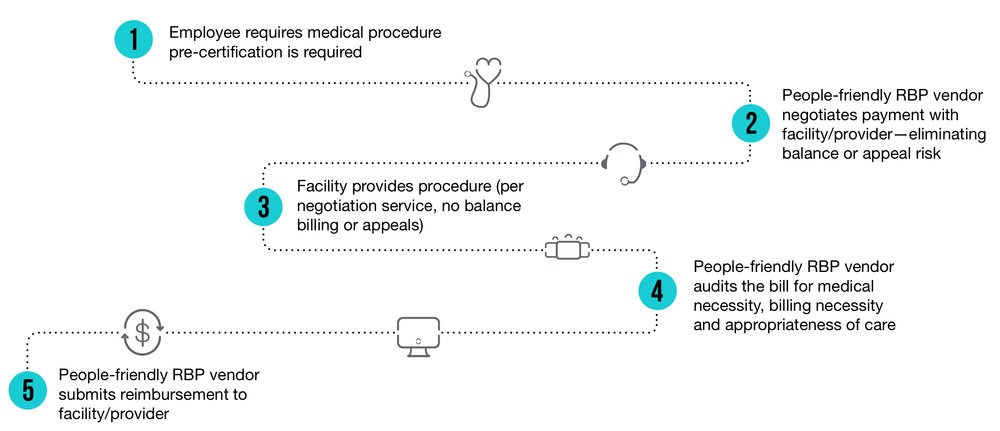Learn How Companion Short Term Medical Reference Based Pricing works vs PPO
Reference-based pricing (RBP) was supposed to be a surefire strategy to prevent overpaying for medical claims. However, employers experienced an alarming amount of frustration from their employees, who were struggling to cope with balance billing and the fear of medical debt. Since then, some vendors have evolved the RBP game to include a people-friendly approach.
RBP vendors used strict reference points to Medicare for all service types. This created a “take it or leave it” message for providers and left employees receiving bills from their providers for the balance that their health plan was refusing to pay (aka, a balance bill). These bills came as a surprise to employees - and vendors were providing little to no education or support to help guide employees on how to resolve these balance bills.
Eventually RBP vendors began to grow more flexible with their payment models by incorporating additional data to determine what was an appropriate amount to pay. Up-front and real-time member education became a part of their offering. Some even began offering employee assistance with balance bills.
The people-friendly reference-based pricing model.
Today, employers are able to implement a modern reference-based pricing model that eliminates over-paying for claims, but also offers complete transparency and the support employees need – the people-friendly reference-based pricing model:
- Providers receive fair-market reimbursement
- Employers get connected with providers and see significant healthcare savings and transparent claims data
- Employees get the support they need to navigate the complex healthcare system
People-friendly reference-based pricing still has Medicare at its core. However, it’s no longer a rigid, one-size-fits-all approach. Instead, these vendors directly reach out to providers and negotiate a fair-market reimbursement using Medicare as a reference point. This ensures providers are being paid fairly for services and reduces the risk of employees receiving a balance bill.
It’s important to note that people-friendly reference-based pricing is not solely based around Medicare. These vendors offer employers a proactive provider disruption analysis, which helps identify the doctors an organization’s employees are used to seeing. This will often lead to provider outreach and contracting with providers to guarantee the provider will accept the negotiated pricing, essentially replacing traditional PPO networks with RBP networks.
The education and support offered by people-friendly reference-based pricing sets it far apart from the traditional reference-based pricing model. Vendors will navigate employees to high quality and low-cost providers in their area. One way they do this is by implementing copay incentives – offering lower copays for medical services if they visit pre-negotiated providers. In addition, employees are given education on how to react if they receive a balance bill. They’re also given the support and guidance necessary for handling a balance bill to eliminate the worry of medical debt.
Here’s a look at what the people-friendly RBP process can look like for an employee:
